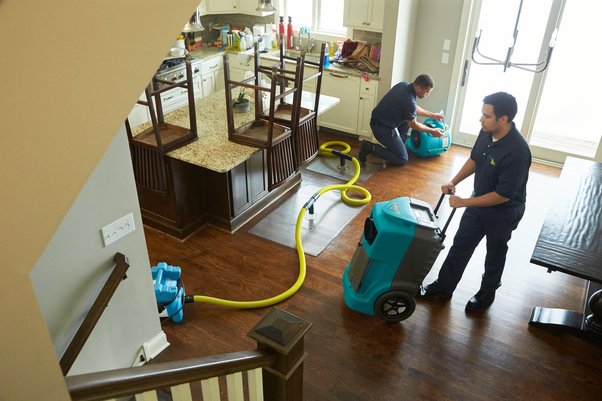Water is undoubtedly one of the most essential resources for life, yet it can also destroy property and belongings when it invades spaces where it shouldn’t. Water damage can occur for various reasons, such as natural disasters, plumbing leaks, overflowing appliances, or accidents. When confronted with water damage, immediate action is crucial to stem further harm and mitigate the negative impacts on structures and possessions. This is where water damage restoration comes into play, a comprehensive process that involves several crucial steps to bring properties back to their pre-damage condition.
Crucial steps to bring properties back to their pre-damage condition
Assessment and Inspection
The first step in water damage restoration involves thoroughly assessing and inspecting the affected area. Trained professionals evaluate the extent of the damage, identifying the source of water intrusion and categorizing the water damage into different classes based on contamination levels. This assessment guides the restoration process, helping professionals determine the appropriate action. Depending on the findings, the team can decide on the equipment and techniques required for efficient restoration.
Water Removal
Once the assessment is complete, the next stage is water extraction. This step involves removing standing water from the affected area using specialized equipment such as pumps and industrial wet/dry vacuums. Efficient water removal is essential to prevent further structural damage and mold growth. Professionals prioritize swift and thorough water extraction to ensure the affected space is ready for the subsequent drying and restoration processes.
Drying and Dehumidification
After water removal, the affected area is still likely to retain moisture, which can lead to mold growth and further damage if left unaddressed. Drying and dehumidification are critical steps in water damage restoration. Professionals use high-powered air movers and dehumidifiers to eliminate excess moisture from the air and materials. This process might take several days to dry all affected surfaces thoroughly. Monitoring equipment such as moisture meters helps the restoration team track progress and ensure the area reaches the desired moisture levels.
Cleaning and Sanitization
Water damage can introduce contaminants and pathogens to the affected space, posing health risks to occupants. Cleaning and sanitization are essential to ensure a safe and healthy environment post-restoration. Professionals use specialized cleaning agents to disinfect and sanitize surfaces, eliminating harmful microorganisms. This step addresses potential health hazards and removes odors that might have developed due to the water damage. Thorough cleaning and sanitization contribute to a complete restoration, allowing occupants to return to a space that is not only dry but also safe.
Structural Repairs
In severe water damage, structural elements of the property might be compromised. This could include weakened walls, flooring, ceilings, and more. The restoration process implicates evaluating the extent of the structural damage and making necessary repairs. This might include replacing damaged drywall, reinforcing weakened supports, and addressing other structural issues. Timely and effective structural maintenance is paramount to ensure the safety and stability of the property.
Restoration and Recovery
The final phase of water damage restoration is the restoration and recovery of the affected space to its pre-damage condition. This step implicates repainting walls, reinstalling flooring, and replacing damaged fixtures. The goal is to bring the space back to its original aesthetic and functional state. Restoration may also involve repairing or replacing items affected by the water damage, such as furniture, electronics, and personal belongings. Effective restoration requires attention to detail and skilled craftsmanship to ensure the space looks good and is fully functional and safe.
Preventive Measures
Beyond the restoration process, professionals often recommend preventive measures to minimize the risk of future water damage. This could include suggesting improvements to drainage systems, reinforcing vulnerable areas, and promoting regular maintenance checks. Enduring these measures can remarkably reduce the likelihood of encountering water damage in the future, saving property owners both time and money.
Environmental Considerations
Water damage restoration also considers environmental factors. Professionals aim to minimize waste and utilize eco-friendly practices wherever possible. Proper disposal of contaminated materials and adherence to local regulations contribute to responsible restoration practices prioritizing property and the planet.
Water damage restoration in San Diego is a comprehensive process involving a series of well-coordinated steps to address the various damage caused by unwanted water intrusion. Each phase is crucial in returning properties to their pre-damage condition, from assessment and water removal to drying, cleaning, structural, and final restoration. Moreover, this process goes beyond mere restoration, including preventive measures to safeguard against future incidents. When faced with water damage, seeking professional restoration services ensures the effective recovery of the affected space and the prevention of potential health risks and further deterioration.
fordhamram.com
https://fordhamram.com/2023/08/25/what-does-water-damage-restoration-involve/














